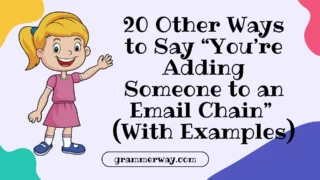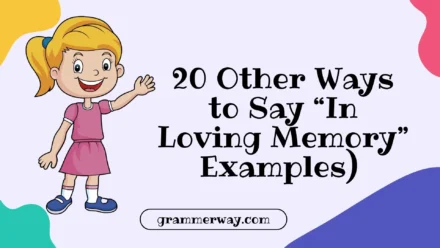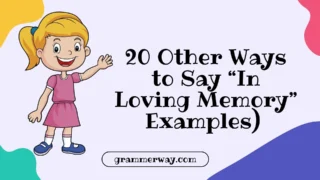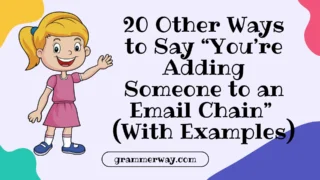Finding the right words to communicate “Coming Soon” can make a message feel more thoughtful, personal, and engaging. Whether you’re announcing a new project, a product launch, or an upcoming event, choosing alternative expressions allows your communication to feel warm, polished, and professional. Using these alternatives can help your audience feel excited and appreciated, rather than simply waiting passively.
What Does “Coming Soon” Mean?
The phrase “Coming Soon” indicates that something new, exciting, or important is on the way. It is often used to inform others about upcoming events, releases, or products, creating anticipation and engagement. Choosing the right words to convey this meaning can make your communication feel more intentional and expressive.
Is It Professional/Polite to Say “Coming Soon”?
Yes, saying “Coming Soon” is professional and polite, especially in marketing, business, and event announcements. However, using more creative alternatives can make your message stand out, show thoughtfulness, and engage the audience on a deeper level.
Synonyms For “Coming Soon”
- Arriving Shortly
- Launching Soon
- Coming Up
- On Its Way
- Soon to Arrive
- Around the Corner
- Just Around the Corner
- Rolling Out Soon
- Upcoming
- In the Works
- Approaching
- On the Horizon
- In the Pipeline
- Fast Approaching
- On Deck
- Imminent
- On the Way
- Upcoming Soon
- In Store
- Around the Bend
1. Arriving Shortly
Scenario: Announcing the arrival of a new product or service to your customers.
Meaning: Indicates something will appear or be available very soon, often within a short period.
Examples:
- Our highly anticipated newsletter is arriving shortly, so keep your inbox ready.
- The newest collection of summer clothing is arriving shortly in our stores nationwide.
- Your requested service update is arriving shortly, please stay tuned for notifications.
- This exclusive digital guide is arriving shortly for all our registered members.
- The redesigned website is arriving shortly, promising a faster and easier browsing experience.
Tone: Polite, professional, and slightly anticipatory.
Explanation: This phrase communicates urgency without pressure. It helps your audience feel prepared and included, creating a sense of friendly expectation.
2. Launching Soon
Scenario: Perfect for product launches, app releases, or new projects.
Meaning: Signals that something new is preparing to be introduced to the audience very soon.
Examples:
- Our exciting mobile app is launching soon, bringing smarter ways to organize your tasks.
- The next season of our podcast is launching soon, with amazing guest interviews.
- The limited edition sneakers are launching soon, and stocks are expected to run out fast.
- This innovative software update is launching soon, enhancing your workflow efficiency.
- The upcoming charity campaign is launching soon, and we would love your participation.
Tone: Enthusiastic, professional, and promotional.
Explanation: “Launching Soon” conveys excitement and official readiness. It works well in marketing or public announcements, helping the audience feel part of the upcoming event.
3. Coming Up
Scenario: Used for events, announcements, or scheduled updates.
Meaning: Suggests something is about to happen or be available very soon, creating anticipation.
Examples:
- Our live Q&A session is coming up this Friday, so mark your calendars.
- The next blog post is coming up, filled with tips to improve productivity.
- The special promotional offer is coming up, don’t miss your chance to save.
- A surprise feature is coming up in the latest app update for all users.
- The new cooking series is coming up on our YouTube channel next week.
Tone: Friendly, casual, and engaging.
Explanation: “Coming Up” feels approachable and informal, making the audience feel included and eager without pressure.
4. On Its Way
Scenario: Perfect for packages, products, or services that will be delivered or available soon.
Meaning: Communicates that something is currently in progress and will reach the audience shortly.
Examples:
- Your order is on its way, and you should receive it within the next two days.
- The latest newsletter edition is on its way to your inbox.
- Our new team project is on its way to the final testing stage.
- The limited edition product is on its way to stores nationwide.
- Your requested documents are on their way, please check your mailbox soon.
Tone: Reassuring, calm, and optimistic.
Explanation: “On Its Way” creates a sense of confidence and reliability. It reassures the audience that something promised is actively in progress, reducing impatience.
5. Soon to Arrive
Scenario: Ideal for formal announcements, product reveals, or project updates.
Meaning: Indicates that something will appear or be available in the near future.
Examples:
- The newest software update is soon to arrive, bringing exciting new features.
- Our seasonal catalog is soon to arrive, featuring this year’s trending styles.
- The anticipated art exhibit is soon to arrive at the downtown gallery.
- A limited edition release is soon to arrive, so prepare for early access.
- Your requested shipment is soon to arrive, arriving within the scheduled timeframe.
Tone: Formal, polished, and anticipatory.
Explanation: “Soon to Arrive” adds formality and professionalism, making it suitable for business communications while maintaining warmth.
6. Around the Corner
Scenario: Often used for events, holidays, or seasonal releases.
Meaning: Suggests something is very near in time or availability, creating excitement and anticipation.
Examples:
- The holiday sale is around the corner, so start making your shopping list.
- The new product line is around the corner, promising innovative designs.
- A special announcement is around the corner, and you won’t want to miss it.
- The upcoming festival is around the corner, bringing fun and celebrations.
- Your favorite TV show is around the corner, ready to air next week.
Tone: Friendly, conversational, and exciting.
Explanation: “Around the Corner” feels approachable and casual, making the audience look forward to what’s coming with pleasant anticipation.
7. Just Around the Corner
Scenario: Used for upcoming events, launches, or seasonal promotions.
Meaning: Suggests that something will happen very soon, creating excitement and anticipation.
Examples:
- The grand opening of our new store is just around the corner, get ready to join us.
- The next episode of the series is just around the corner, coming this Friday.
- Your favorite seasonal flavors are just around the corner, hitting stores soon.
- A new blog post is just around the corner, packed with helpful tips.
- The limited edition collection is just around the corner, so don’t miss it.
Tone: Excited, friendly, and casual.
Explanation: “Just Around the Corner” conveys immediacy and anticipation. It makes readers feel included and excited about upcoming developments.
8. Rolling Out Soon
Scenario: Commonly used for product launches, updates, or services.
Meaning: Indicates that something will be gradually introduced or launched soon.
Examples:
- Our new app features are rolling out soon to all users worldwide.
- The updated loyalty program is rolling out soon, bringing exclusive benefits.
- Our eco-friendly product line is rolling out soon to select stores.
- The redesigned website is rolling out soon, improving user experience.
- The latest software patch is rolling out soon, fixing critical bugs.
Tone: Professional, upbeat, and forward-looking.
Explanation: “Rolling Out Soon” emphasizes progress and forward movement, reassuring the audience that the release is active and imminent.
9. Upcoming
Scenario: Suitable for events, releases, or announcements in calendars or newsletters.
Meaning: Refers to something that will happen or be available in the near future.
Examples:
- The upcoming webinar will focus on productivity strategies for busy professionals.
- Our upcoming product launch promises innovative solutions for everyday tasks.
- Check out our upcoming events listed on the community calendar this month.
- The upcoming feature update will enhance your app experience significantly.
- Don’t miss the upcoming sale with exclusive discounts on all products.
Tone: Neutral, informative, and professional.
Explanation: “Upcoming” is simple and versatile, perfect for conveying anticipation in formal or casual contexts.
10. In the Works
Scenario: Best for projects, ideas, or initiatives being prepared.
Meaning: Suggests that something is actively being developed or prepared and will be available soon.
Examples:
- A new mobile feature is in the works, designed to improve usability.
- Our next charity event is in the works, aiming to support local communities.
- A surprise update is in the works for our loyal subscribers.
- The upcoming training program is in the works, focusing on leadership skills.
- An exciting collaboration is in the works, promising unique experiences for users.
Tone: Informative, encouraging, and optimistic.
Explanation: “In the Works” conveys active preparation, making the audience feel engaged and confident that something valuable is coming.
11. Approaching
Scenario: Useful for deadlines, events, or seasonal activities.
Meaning: Indicates that something is near in time or occurrence, prompting attention.
Examples:
- The end-of-year sale is approaching, so start planning your purchases.
- The deadline for submissions is approaching, make sure to finalize your work.
- Our annual conference is approaching, bringing exciting networking opportunities.
- The launch of the new collection is approaching, promising innovative designs.
- The next public holiday is approaching, perfect for travel planning.
Tone: Professional, clear, and slightly urgent.
Explanation: “Approaching” communicates timeliness and awareness, helping the audience anticipate or prepare for upcoming events.
12. On the Horizon
Scenario: Ideal for long-term projects, releases, or future opportunities.
Meaning: Suggests that something is visible or expected soon, often with excitement.
Examples:
- A new software update is on the horizon, improving performance significantly.
- Exciting career opportunities are on the horizon for ambitious professionals.
- Our next travel series is on the horizon, bringing stunning locations to viewers.
- A fresh marketing campaign is on the horizon, promising innovative strategies.
- The next book in the series is on the horizon, with compelling storylines.
Tone: Inspirational, hopeful, and forward-looking.
Explanation: “On the Horizon” gives a sense of vision and anticipation, encouraging readers to look forward to what’s next.
13. In the Pipeline
Scenario: Great for business, tech updates, or upcoming releases.
Meaning: Refers to something being prepared or in progress and will happen soon.
Examples:
- A new app feature is in the pipeline, ready to enhance user experience.
- Exciting updates are in the pipeline, aiming to improve overall efficiency.
- Our next marketing campaign is in the pipeline, designed to engage audiences.
- Innovative products are in the pipeline, soon reaching retail stores.
- Several collaboration projects are in the pipeline, promising unique opportunities.
Tone: Professional, business-focused, and encouraging.
Explanation: “In the Pipeline” communicates preparation and development, helping the audience feel included and informed.
14. Fast Approaching
Scenario: Used for events, deadlines, or seasonal launches that are imminent.
Meaning: Indicates that something will happen very soon, creating urgency and anticipation.
Examples:
- The holiday season is fast approaching, so don’t miss our special offers.
- Our big sale is fast approaching, prepare to grab exclusive deals.
- The application deadline is fast approaching, submit your forms on time.
- The new product launch is fast approaching, promising innovative features.
- The festival celebrations are fast approaching, bringing joy to all attendees.
Tone: Urgent, energetic, and anticipatory.
Explanation: “Fast Approaching” conveys immediacy and excitement, prompting the audience to act or pay attention.
15. On Deck
Scenario: Informal, used for upcoming tasks, events, or announcements.
Meaning: Suggests that something is ready to happen next or very soon.
Examples:
- The next webinar is on deck, so register to secure your spot.
- A fresh blog post is on deck, packed with helpful insights.
- Our seasonal campaign is on deck, bringing exciting deals for customers.
- The product launch is on deck, scheduled for next week.
- The team meeting is on deck, focusing on quarterly progress updates.
Tone: Casual, friendly, and anticipatory.
Explanation: “On Deck” feels informal and approachable, creating excitement while indicating readiness and proximity.
16. Imminent
Scenario: Suitable for urgent updates, alerts, or product launches.
Meaning: Indicates that something is about to happen very soon, almost immediately.
Examples:
- The system update is imminent, so please save your work.
- Our announcement is imminent, stay tuned for important news.
- The limited edition release is imminent, and only a few units remain.
- The upcoming webinar is imminent, register before seats run out.
- A major product update is imminent, promising significant improvements.
Tone: Urgent, professional, and precise.
Explanation: “Imminent” conveys urgency and attention, alerting the audience that action or awareness is required immediately.
17. On the Way
Scenario: Suitable for deliveries, product releases, or services.
Meaning: Indicates that something is currently being sent or prepared and will arrive soon.
Examples:
- Your order is on the way, arriving within the next two days.
- The latest software update is on the way to all users.
- A fresh batch of products is on the way, reaching stores soon.
- Your requested documents are on the way, check your mailbox shortly.
- The next newsletter edition is on the way, packed with exciting content.
Tone: Reassuring, calm, and optimistic.
Explanation: “On the Way” emphasizes progress and reliability, reassuring the audience that what is promised is actively in motion.
18. Upcoming Soon
Scenario: Informal, used for social media announcements, events, or content.
Meaning: Signals that something will happen shortly, in the near future.
Examples:
- Our next video tutorial is upcoming soon, so subscribe for updates.
- The new fashion collection is upcoming soon, with trendy designs.
- A special giveaway is upcoming soon, don’t miss your chance.
- The seasonal sale is upcoming soon, with exclusive discounts available.
- Our next blog series is upcoming soon, sharing valuable insights.
Tone: Casual, enthusiastic, and engaging.
Explanation: “Upcoming Soon” creates excitement and curiosity, making the audience eager to follow updates.
19. In Store
Scenario: Used for surprises, products, or events that will happen shortly.
Meaning: Suggests that something is planned or reserved for the audience in the near future.
Examples:
- Exciting surprises are in store for our loyal customers this month.
- A special announcement is in store for all subscribers.
- Amazing deals are in store during the upcoming holiday season.
- New features are in store for the next software update.
- A fun-filled event is in store for our community this weekend.
Tone: Friendly, inviting, and curious.
Explanation: “In Store” creates anticipation and intrigue, encouraging the audience to look forward to what’s coming.
20. Around the Bend
Scenario: Informal, suitable for casual announcements, events, or releases.
Meaning: Indicates that something will happen soon, very near in time.
Examples:
- The next episode of our series is around the bend, airing next week.
- Exciting updates are around the bend, bringing new features to the app.
- The seasonal sale is around the bend, offering special discounts.
- A new collaboration is around the bend, promising unique experiences.
- The upcoming workshop is around the bend, register before seats fill up.
Tone: Casual, conversational, and anticipatory.
Explanation: “Around the Bend” feels approachable and informal, creating friendly excitement while signaling that something is almost here.
Conclusion
Using alternative expressions for “Coming Soon” allows you to communicate warmth, thoughtfulness, and professionalism. Each phrase brings its own tone and style, helping your audience feel engaged, prepared, and excited. By carefully choosing the right wording, your announcements can become memorable, empathetic, and impactful.
FAQs:
1. Can I use “Coming Soon” in formal business emails?
Yes, but using alternatives like “Soon to Arrive” or “In the Works” adds a more professional tone.
2. Which alternative is best for social media announcements?
Casual options like “Around the Corner”, “On Deck”, or “Coming Up” work well for social engagement.
3. Are these alternatives suitable for product launches?
Absolutely. Phrases like “Launching Soon”, “Rolling Out Soon”, and “Fast Approaching” are perfect for marketing campaigns.
4. How can I choose the right alternative?
Consider the audience, tone, and urgency. Formal communications need polished words, while casual updates can use friendly, conversational expressions.
5. Can these phrases create excitement for events?
Yes, phrases like “Just Around the Corner” or “On the Horizon” build anticipation and make audiences look forward to upcoming events.







Leave a Comment